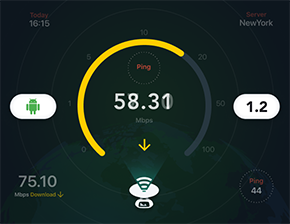

NetSpot can visualize your wireless network by building a visual Wi-Fi map. If you're able to control your transmit power on your wifi devices, turning them up is not always the best option and could make it worse (causing antennation to itself and interference to other devices).NetSpot is a simple and accessible wireless survey tool, which allows collecting, visualizing and analyzing Wi-Fi data. The cross over will be wherever the signal strength is roughly the same between multiple wireless points and may take you doing another survey if you see evidence of the devices switching back and forth (ping spikes for example). The crossover may not be obvious for buildings that aren't uniform between each point and may take another wifi check to see. Try to leave the middle/crossover of each node/WAP away from an area of main use if possible so that there's less of a chance of your devices switching between them constantly. away may have a ceiling and wall between it and the source. Think three dimensionally for multi-story places. If you have concrete or masonry blocks you're probably going to want to resort either dropping cabling throughout the house to a central switch that is then cabled to a router for cable connectable devices or for wireless access points, either to the switch or straight to the router. You can use your best guess and then check after if you need to.Ĭoncrete blocks a lot, masonry block is just about as bad, brick is blocks signal noticeably but much less the equivalent concrete and usually isn't as bad as you'd think, wood and drywall aren't too bad considering and glass does block some signal but its pretty minimal. Concrete with rebar is going to block a lot more signal strength than dry wall for example. Walls and ceilings, depending on the type of material lessen this of course. 70 dBm or greater = OK or 5 out of 10 maxĪ good rule of thumb is to place mesh nodes or wireless access points no less than 25 feet from the wifi source by unobstructed line of sight so that they don't interfere. 65 dBm or greater = Good or 7 out of 10 max 30 dBm or great = Great or 10 out of 10 max On the floor plan I'd jot down either the power or word or rating like this: You'll then want to go to each location where you'd potentially think about placing your router, wifi access points or mesh nodes.

You could use something like draw.io -> Create new diagram -> Other -> Floor Plan or you could of course use something like Visio or even use basic shapes in your favorite graphics application. Once you have your best channel selected for both 2.4 GHz and 5 GHz, print out a floor plan for your building/home/whatever. I recommend changing to the best channel manually. I wouldn't depend on the "Auto" channel select feature for your router/access points. The things you want to check for are strength of your own signal but also you want to check for channels other wifi sources are using and their power compared to your own power. What you do is with one of these open, you walk to your desired spots around the location and check both 2.4 GHz and 5 GHz. I think the free version limits you to only 3 data points. Looks like their TLS (https) certificate expired today, so you're going to get an unsecure warning.įor paid, there's Netspot for Windows, MacOS and Windows with floor plans and such but it is ~$50.

The also have some usage tips.įor Windows there is InSSIDer and the lite version is free. So here's some info about how to bypass it if you can. Note that Android may limit wifi scanning to save power. There is the underrated (seems like its ad latent competition by the same name gets more google search results) open source WiFi Analyzer for Android. There are some apps that let you do a floor plan if you pay.


 0 kommentar(er)
0 kommentar(er)
